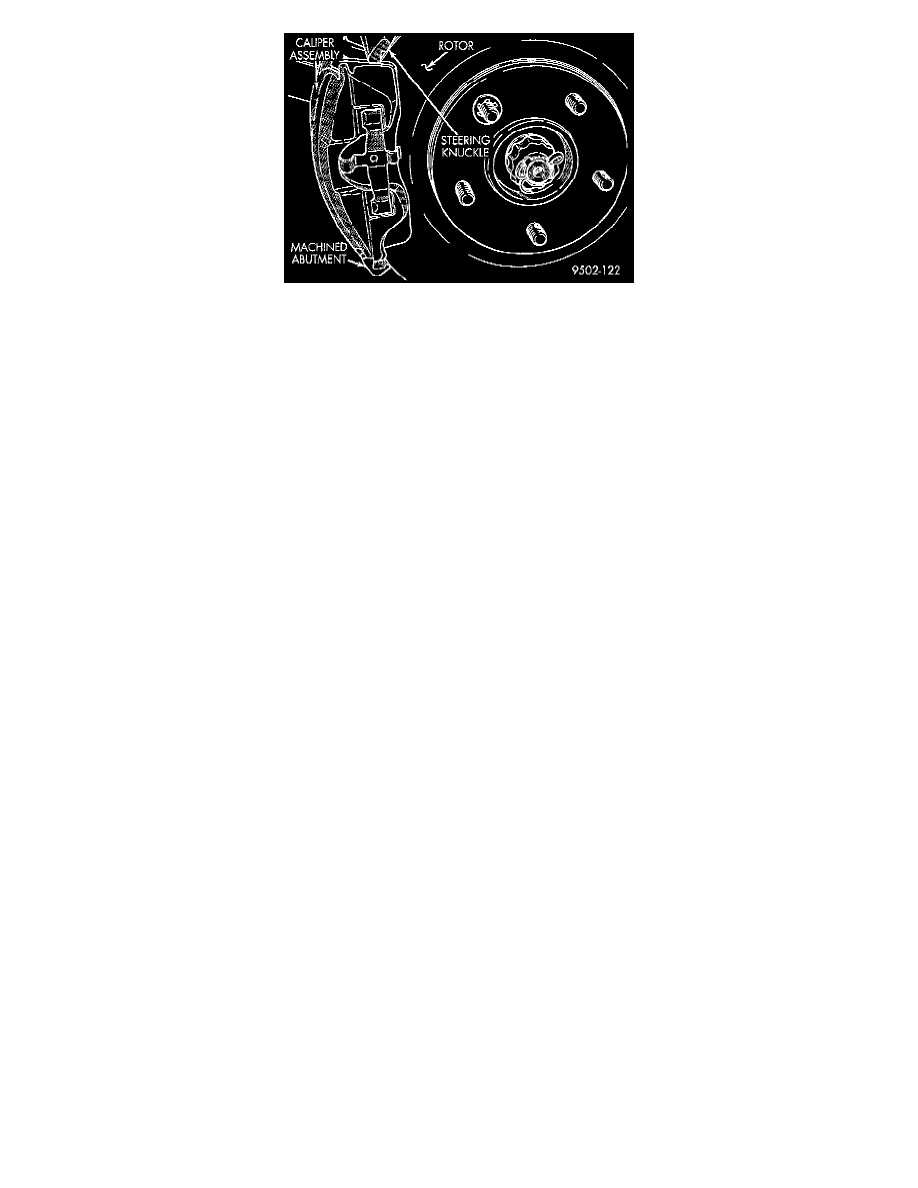Grand Voyager V6-201 3.3L VIN R SMFI (1997)

Caliper Assembly Mounting On Steering Knuckle (Typical)
5. Remove caliper from steering knuckle, by first rotating free end of caliper away from steering knuckle. Then slide opposite end of caliper out from
under machined abutment on steering knuckle.
CAUTION: If caliper is not being removed, support it suitably. Do not let caliper hang by brake hose.
INSTALLATION
CAUTION: Use care when installing the caliper assembly onto the steering knuckle, so the seals on the caliper guide pin bushings do not get damaged
by the steering knuckle bosses.
1. Lubricate both steering knuckle abutments with a liberal amount of Mopar Multipurpose Lubricant, or equivalent.
2. Install brake pads.
3. Install the caliper guide pin bolts and tighten to a torque of 41 Nm (30 ft. lbs.).
CAUTION: Extreme caution should be taken not to cross thread the caliper guide pin bolts.
NOTE:
a. If caliper was replaced or overhauled continue with step 4.
b. If pads were replaced proceed to step 6.
4. Install brake hose onto caliper using banjo bolt. Torque the brake hose to caliper assembly banjo bolt to 33 Nm (24 ft. lbs.).
CAUTION: New seal washers MUST always be used when installing brake hose to caliper.
5. Bleed the brake system. See: Brake Bleeding/Service and Repair
6. Install the wheel and tire assembly.
7. Using a torque wrench, tighten the wheel mounting stud nuts in proper sequence until all nuts are torqued to half specification. Then repeat the
tightening sequence to the full specified torque of 115-156 Nm (84-115 ft. lbs.).
8. Remove jackstands or lower hoist.
WARNING: Before moving vehicle, pump the brake pedal several times to ensure the vehicle has a firm brake pedal to adequately stop
vehicle.
9. Road test the vehicle and make several stops to wear off any foreign material on the brakes.
Rear
WARNING: Although factory installed brake linings are made from asbestos free materials, some after market brake lining may contain
asbestos. This should be taken into account when servicing a vehicle's brake system, when after market brake linings may have been installed
on the vehicle. Always wear a respirator when cleaning brake components as asbestos can cause serious bodily harm such as asbestosis and or
cancer. Never clean brake components by using compressed air, use only a vacuum cleaner specifically designed for the removal of brake dust.
If a vacuum cleaner is not available, clean brake parts using only water-dampened shop towels. Do not create brake lining dust by sanding
brake linings when servicing a vehicle. Dispose of all dust and dirt suspected of containing asbestos fibers using only sealed air tight bags or
containers. Follow all recommended safety practices prescribed by the Occupational Safety And Health Administration (OSHA) and the
Environmental Protection Agency (EPA), for handling and disposal of products containing asbestos.
CAUTION: During service procedures, grease or any other foreign material must be kept off brake shoe assemblies, and braking surfaces of brake
drum and external surfaces of hub/bearing assembly.
